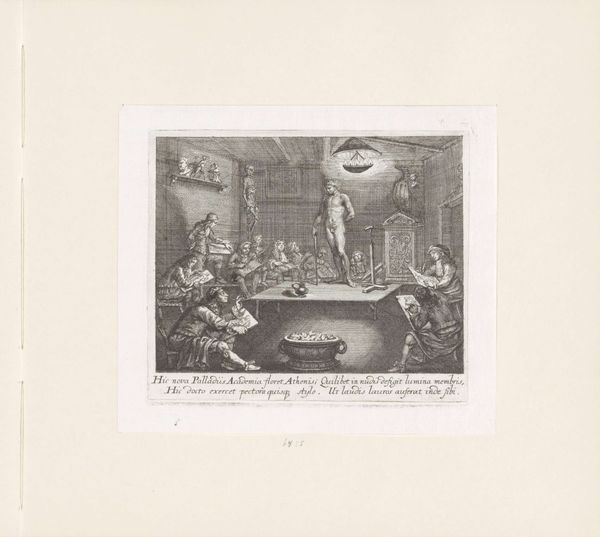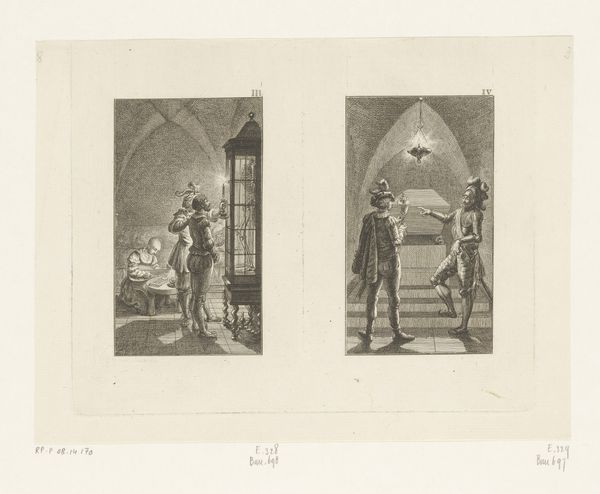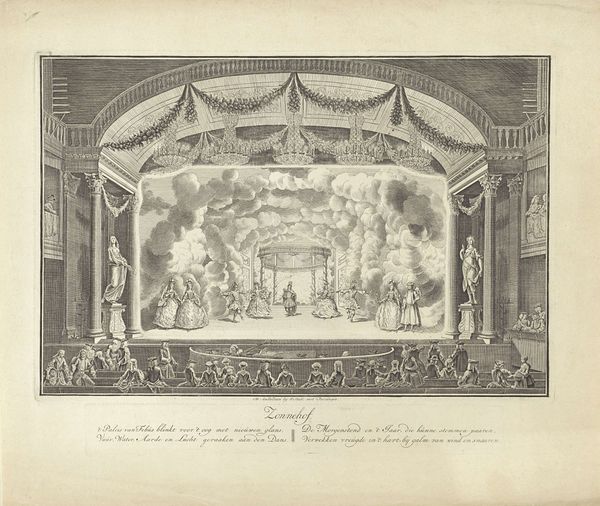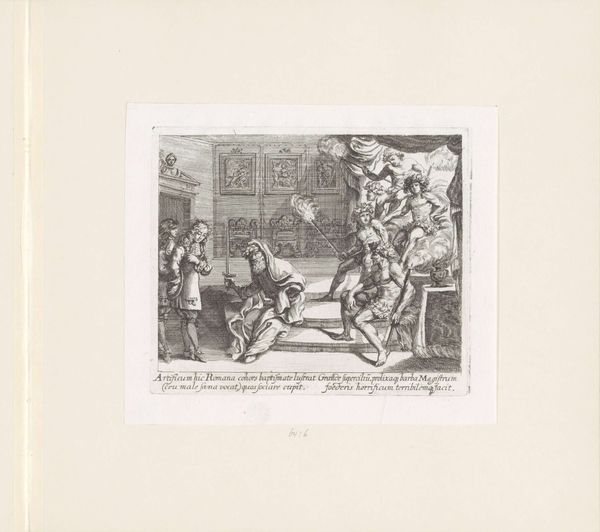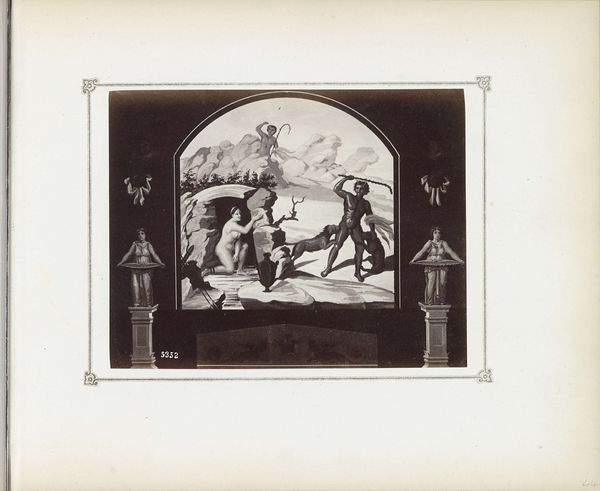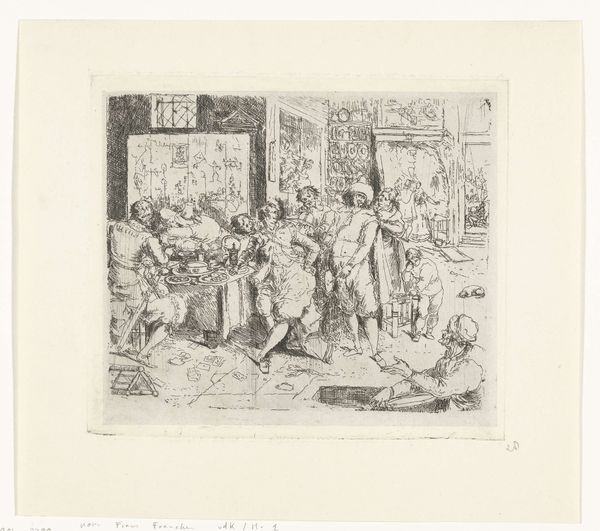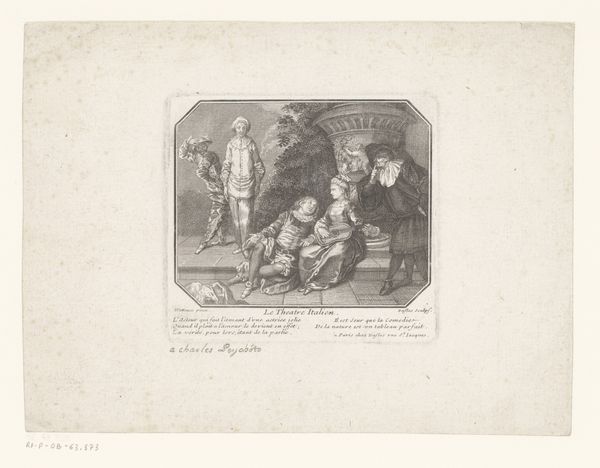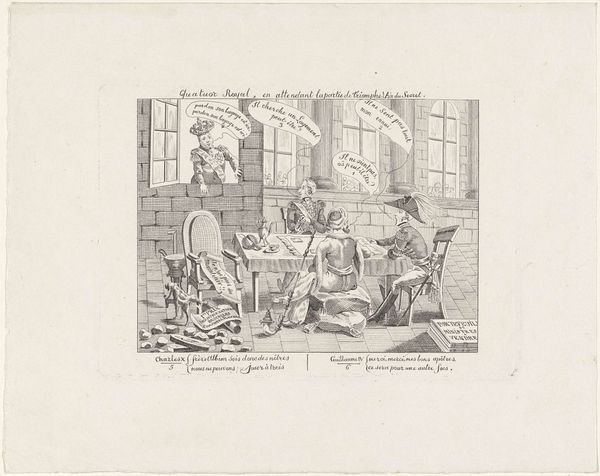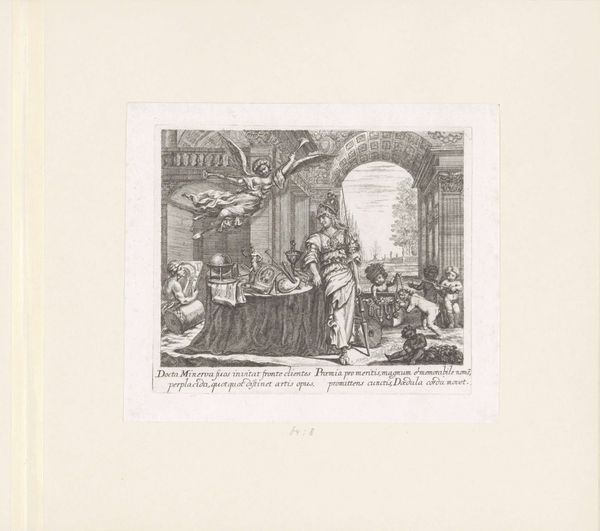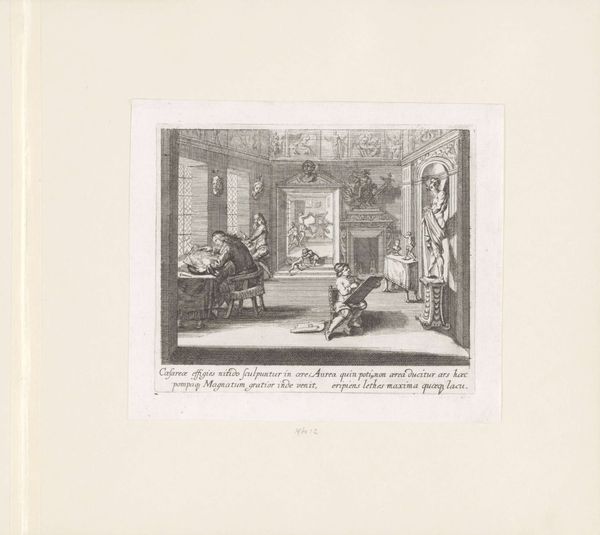
print, intaglio, engraving
#
narrative-art
#
baroque
#
ink paper printed
# print
#
intaglio
#
old engraving style
#
history-painting
#
engraving
Dimensions: height 135 mm, width 160 mm
Copyright: Rijks Museum: Open Domain
Curator: Take a look at "Edelsmeedkunst," a 1680 engraving attributed to Matthäus Küsel, here at the Rijksmuseum. What's your first reaction? Editor: Intricate! It looks like an etching—delicate, precise lines, yet teeming with figures. All that detail crammed into a relatively small print... feels incredibly dense. Curator: The density serves a purpose. Consider the architecture; it reflects the baroque obsession with opulence. But look closer at the main scene, a celebration of craftsmanship and artistry. The central figures, the gold or silversmiths, are almost idealized. Editor: Right, and this is where the material production aspect comes into play. An engraving like this functions as both record and promotion, an advertisement of sorts, demonstrating the possibilities of refined production through precious metals. How was this level of detail even achieved? Curator: Through intaglio printing, the design is incised into a metal plate. Ink fills those grooves, then it's pressed onto the paper. The quality would signal the skills of the artisans and reflect upon the status of the workshop. Observe, for example, that the engraving includes an elegant dog seated beside them, possibly symbolizing loyalty and faithfulness. Editor: Symbolism embedded even in the material. This engraving isn't just documenting craftsmanship; it's participating in crafting an image—a particular ideal of artistic excellence. Curator: Precisely! Consider the inscription; "artifex caelo conficit atque parat", indicating the maker prepares or executes something divinely. Even with its small size, we observe the integration of many different spheres to arrive to this piece. Editor: It's fascinating how something as seemingly utilitarian as an engraving can contain so much socio-cultural information embedded in its very process of making. Thanks for walking me through this, really changed my perspective. Curator: My pleasure, hopefully this conversation offered new angles into understanding craftsmanship, visual storytelling, and baroque ideals, encoded in ink and paper.
Comments
No comments
Be the first to comment and join the conversation on the ultimate creative platform.
